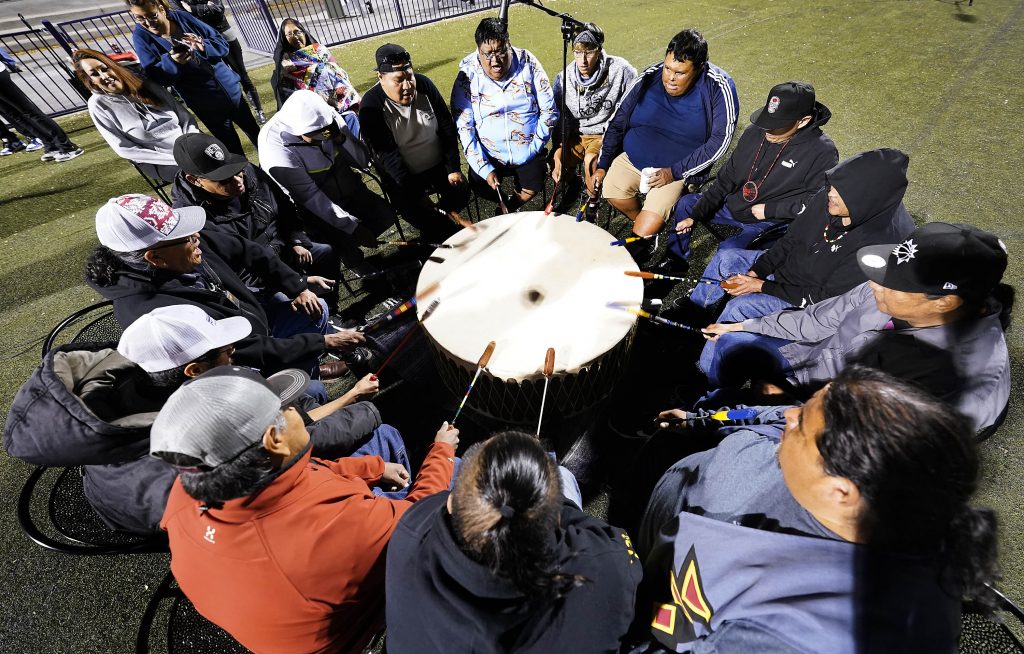
Photos by Ralph Freso / Slideshow
What sounded like just a drum at Grand Canyon University on Thursday night mimics a sound that can only be heard before entering life on Earth.
The consistent rhythm and beat of the drums are therapeutic, reverting the native tribes into a tranquil and familiar state.
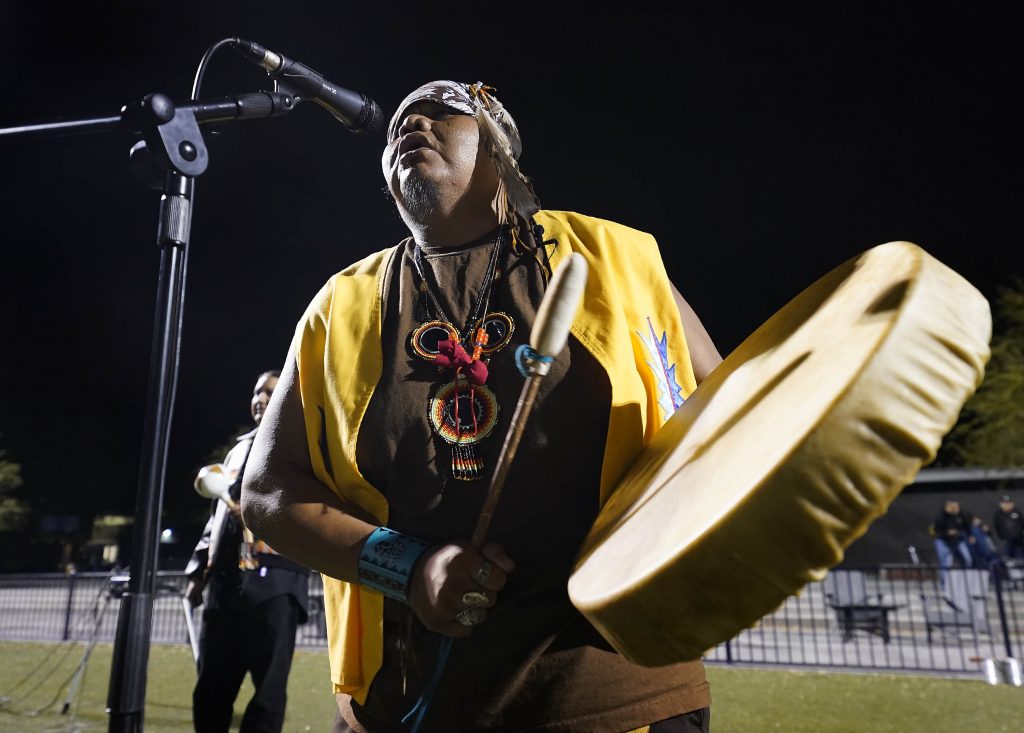
“The first sound you hear in life is the sound of your mother's heartbeat for nine months. The pounding of the drum mimics the heartbeat reconnecting and putting us in a positive headspace,” said Leroy Billiman, who is part of the Navajo tribe.
The Indigenous Culture Celebration, hosted by the Multicultural Office, created a safe place where students can openly share their culture and be surrounded by the smells, décor, sounds and tastes of home.
Nursing major Jasmine Siemek indulged in a delicacy from back home called Indian fry bread — crispy pillows of dough fried in oil and typically topped with an assortment of meat, lettuce, cheese and tomato.
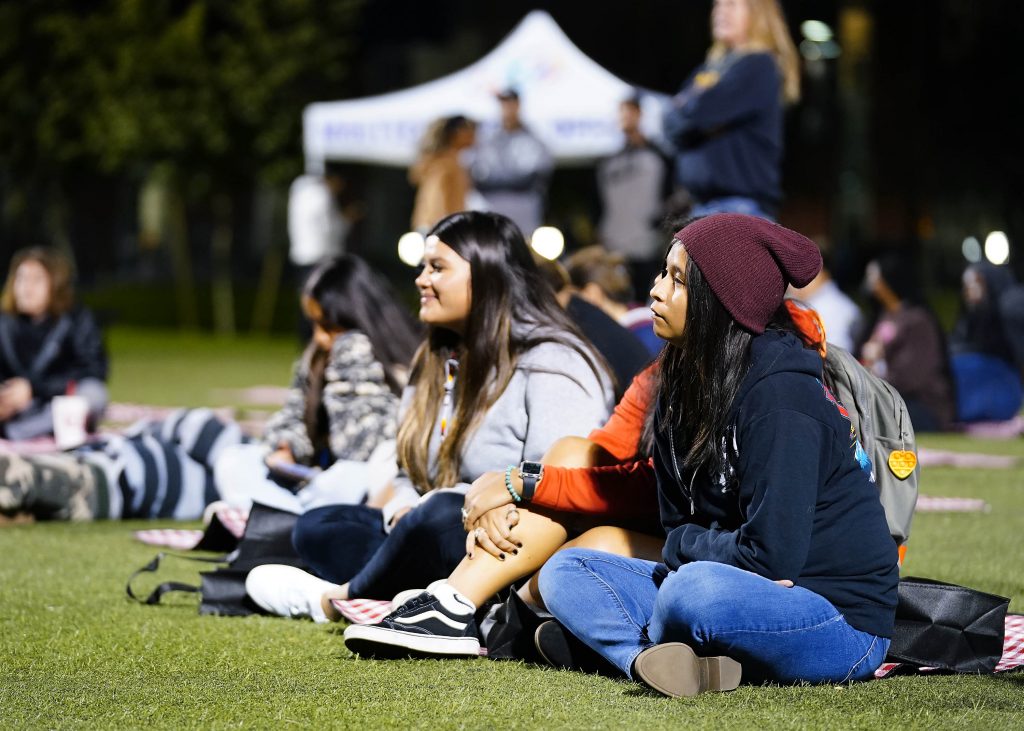
“It’s really cool to be in this environment because it connects you back to your roots – especially when you’re missing home. It gives me a chance to show my friends what I grew up around,” Siemek said. “My mom used to make fry bread a lot when I was little, so it brings me a little closer to home.”
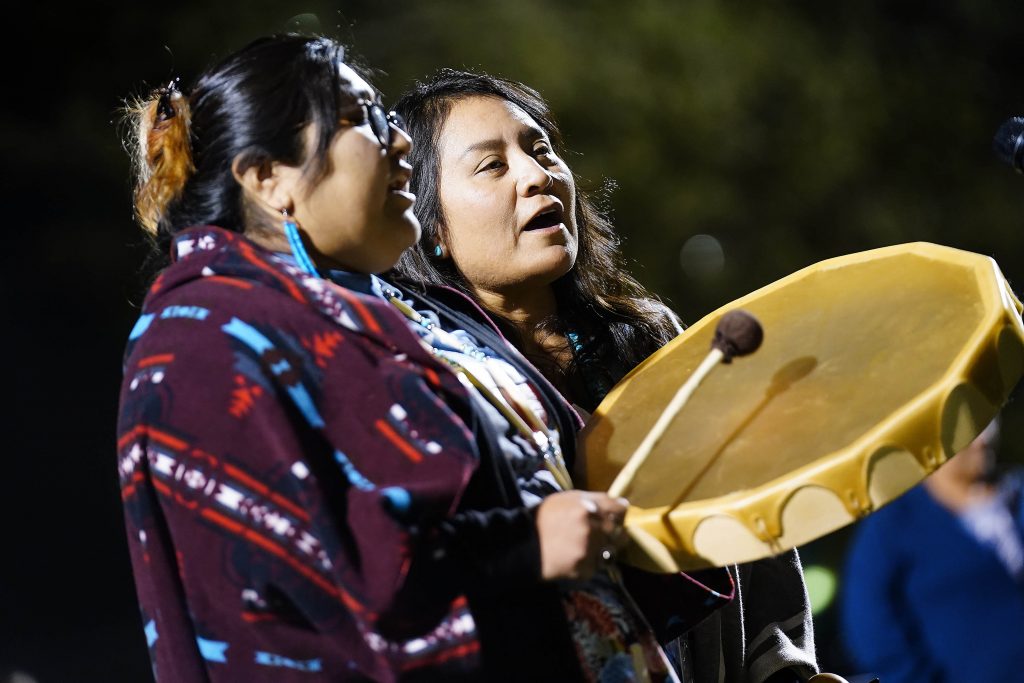
Another reminder of home was the Blue Sage Healing Center singers and the Roadrunner Drum Group, which brought to campus what it calls the "powwow." Both offer a song worshiping the Creator in a way that brings them back to their roots and brings the community together.
When psychology major Kathlyn Nelson was asked what custom the indigenous people hold close to their heart, she had one word: community.
“The powwows are just another reminder that we have to stay together and are stronger together,” she said. “It really allows us to gather in one place to sing, dance and honor our culture.”
The idea of community is reinforced through a 5-foot-5 staff detailed with a large eagle head, beads and leather. It has been passed among 22 tribes in Arizona for 34 years.
Billiman said each feather on the staff represents a year it has been shared. At an end-of-the-year, four-day campout for all the nations, it is passed on to a different tribe.
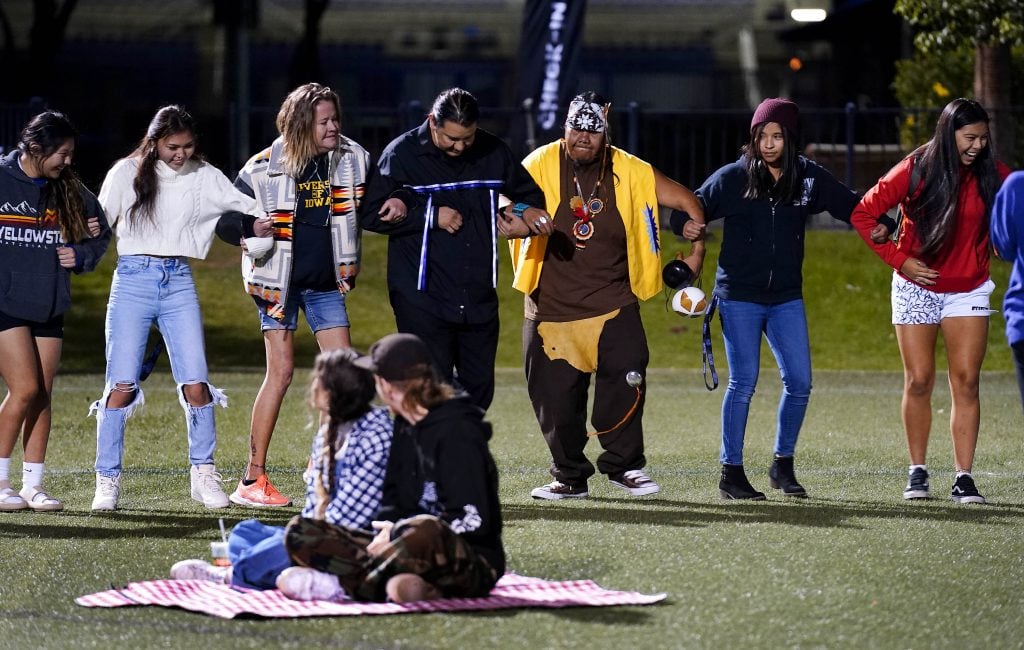
What may look like just a staff to the naked eye holds a sacred meaning to the indigenous culture.
“The eagle staff is a protector,” Billiman said. “It is a warrior and takes the blunt of any negative force that comes to harm. It is a shield, and we treat it as a great warrior.”
Around Billiman’s neck was a tribal seal gifted to him by another tribe. Each symbol and design was strategically placed, symbolizing an important aspect of the Native American culture.

The beaded seal showcased four arrows representing the four valleys of the homeland and three bands or color encompassing the beaded design symbolizing a rainbow as a promise of harmony. The circular design is a reminder that everything is a gift from nature and that everything works together to sustain and protect us.
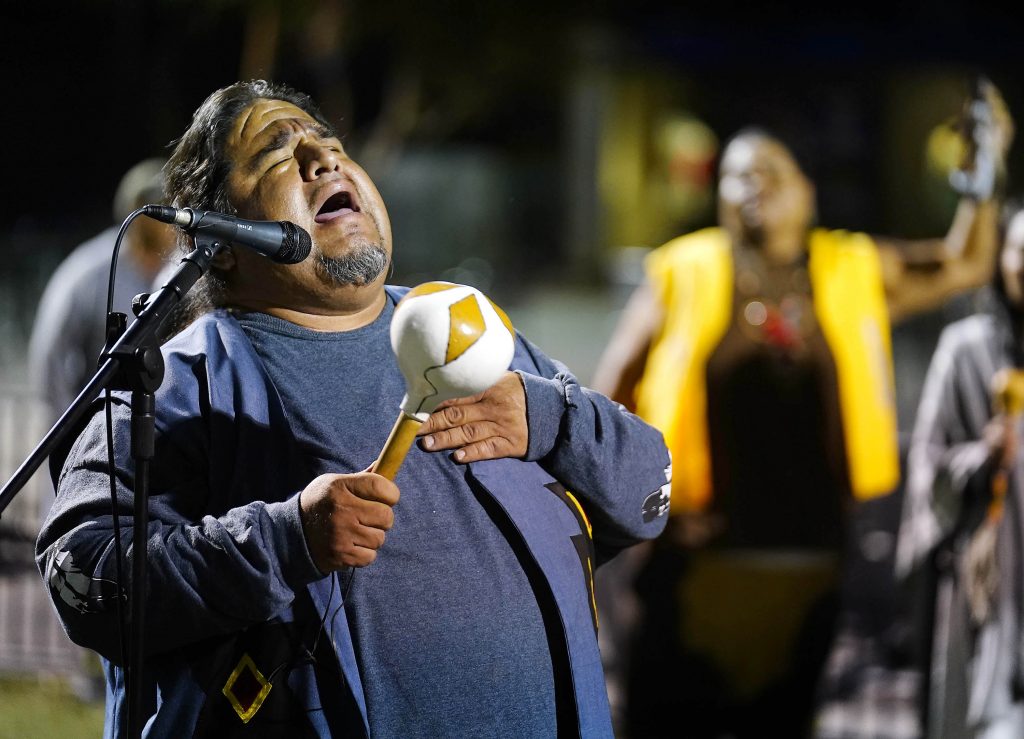
Roadrunner Drum Group member Phillip Robert allows the drums of powwow to be the voice that fights for his community.
“Look at us. We still have our culture and we still have our language. Not all of us live in teepees,” Robert said of the Gila River Indian community.
On a more serious note, Robert wanted to leave one message:
“We’re still here. We fought long and hard to be here – and we are still fighting. Every day, we fight.”
Contact staff writer Lydia P. Robles at 602-639-7665 or [email protected].
****
Related content:




